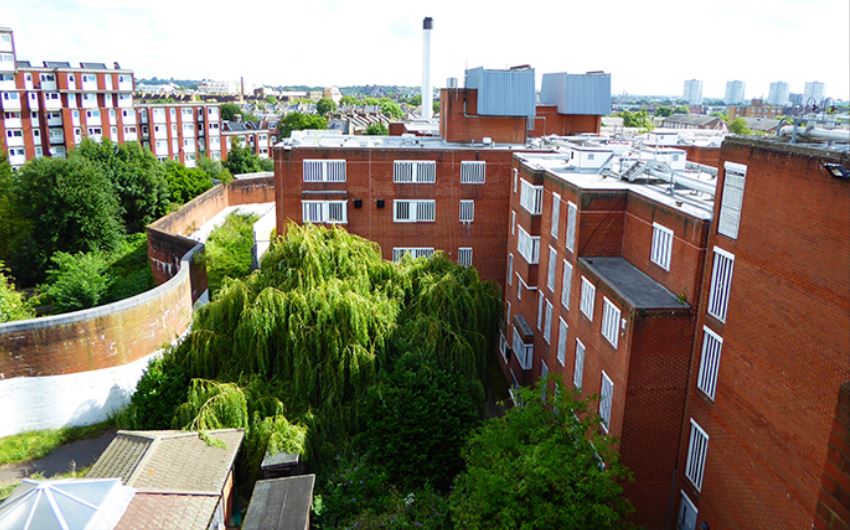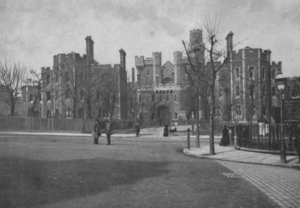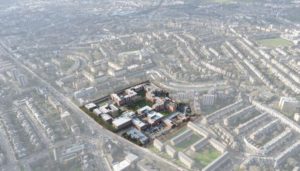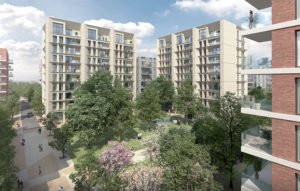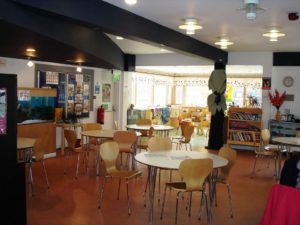HM Prison Holloway was a prison for adult women and young offenders in Holloway, London, England, operated by Her Majesty’s Prison Service. It was the largest womens’ prison in western Europe until its closure last year (2016).
Holloway prison opened in 1852 as a mixed-sex prison. But, due to growing demand for space for female prisoners, particularly due to the closure of Newgate prison, it became female-only in 1903.
Holloway was used to imprison suffragettes fighting for women’s rights, including Constance Markievicz (imprisoned for her part in the Irish Rebellion), Charlotte Despard, Mary Richardson, Dora Montefiore, Hanna Sheehy-Skeffington, and Ethel Smyth.
Holloway Prison was completely rebuilt between 1971 and 1985 on the same site. The badly-planned redevelopment destroyed the historic “grand turreted” gateway to the prison, which had been built in 1851.
Architectural critic Gavin Stamp later regretted the loss and noted that political opinion at the time was such that the Victorian Society to which he belonged felt unable to object.
Now, on November 10, 2017, the Mayor of London, Sadiq Khan, has urged the government to ensure that this valuable land at the Holloway Prison site is used to build genuinely affordable housing as quickly as possible.He has called for affordable homes to be the priority, rather than the former prison being sold to an investor who could sit on the site, waiting for real estate prices to rise.
The 10-acre prison site is capable of providing approximately 1000 new homes. But it’s presently being marketed for sale by the Ministry of Justice, with a November 15, 2017 deadline for expressions of interest from private developers, who would most likely use it primarily for market-rate housing.
The marketing materials state that “The property is offered with full vacant possession. Following consultation with the London Borough of Islington and the Greater London Authority, it is anticipated that the site will provide an opportunity to deliver a significant residential led development in this thriving part of north London.”
“Proceeds from the sale of the site will contribute to the MoJ’s prison reform programme, which is intended to provide significant investment in modern, purpose-built prison facilities. Set to be the largest investment in prison facilities since the Victorian era, the intention is for the new facilities to successfully contribute to the rehabilitation of prisoners. The scale of the property offers interested parties the possibility to create a truly outstanding addition to the London landscape,” it continues.
Khan is concerned about the government’s disposal process – with the site being offered to purchasers with no restrictions or constraints. This increases the risk that it could end up being ‘land banked’ – a process which see sites lying idle and unused for years.With London suffering a housing crisis, Sadiq is committed to ensuring all public land in the capital makes a significant contribution to affordable housing and is released quickly to build new homes.
He clearly set out his approach to the release of public land in the capital through his planning guidance that says those sites should include 50 per cent affordable housing to benefit from his new ‘fast track’ route to gaining planning permission. The Mayor has been working closely with Islington Council on its new planning document for the site, which sets out that the site can viably include 50 per cent affordable housing.
Sadiq has now written to the Justice Secretary, David Lidington, offering City Hall housing and land experts to work with the Ministry of Justice to secure the best deal on the site which can be reinvested in the government’s prison reform programme, whilst crucially also ensuring new homes are built at pace with a high level of genuinely affordable homes for Londoners.
Mayor Khan said: “Holloway Prison is a major site capable of delivering a large number of new and affordable homes for Londoners. It’s absolutely crucial we do not run the risk of this prized asset being ‘land banked’ and left unused for decades.”
The property consists of a number of former prison block buildings together with ancillary uses, including a swimming pool and chapel, built around small areas of open space interspersed with some mature trees, together surrounded by a significant prison wall.
The only exception to this being the former visitors centre that sits fronting onto Parkhurst Road to the southern boundary. The site contains no buildings of historical interest.
The site is inclined towards Holloway Road from south west to north east and is predominantly surrounded on three sides by residential property. There are extensive and panoramic views across London from the upper floors of some of the existing buildings.
The Ministry of Justice also holds the freehold interest to the neighboring Bakersfield Estate, which is let on a 999 year lease over the majority of the property.
“London desperately needs new and affordable homes right now,” Mayor Khan stressed. “I am offering to work with the government – with help from my experienced Homes for Londoners team – to ensure this site not only achieves good value to be reinvested in the prison service, but also that it is built on quickly and delivers hundreds of new and genuinely affordable homes.”

